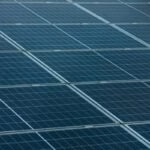-
info@forensicss.com
Send Email
-
11400 West Olympic Blvd, Los Angeles, CA 90064
310-270-0598
Confidentiality Guaranteed
310-270-0598
Confidentiality Guaranteed
Blog Details
-
ForensicsS | Private Detective & Digital Forensics Investigation Experts > News > Uncategorized > US polysilicon import probe is photo voltaic alternate’s ‘greatest offer vulnerability’ – Wood Mackenzie

Jul
US polysilicon import probe is photo voltaic alternate’s ‘greatest offer vulnerability’ – Wood Mackenzie
Identity theft
“The Portion 232 investigation on polysilicon represents the alternate’s greatest offer vulnerability,” acknowledged Elissa Pierce, examine analyst, photo voltaic module technology and markets at Wood Mackenzie.
Pierce added that tariffs on polysilicon may “choke the general US photo voltaic market,” as China controls 95% of international capacity, with microscopic availability of various sources.
“In contrast to module factories in-built months, polysilicon facilities require years to manufacture. Here is time the alternate may additionally now not bag as alternate tensions escalate, and inventory buffers unexpectedly dissipate.”
Then but again, the investigation into polysilicon is now not the handiest hurdle the US photo voltaic alternate faces for the time being.
Wood Mackenzie highlighted the antidumping and countervailing accountability (AD/CVD) tariffs on photo voltaic cells imported from four Southeast Asian nations – Malaysia, Thailand, Vietnam and Cambodia – which fluctuate between 41.08% for Malaysia to 660.04% for Cambodia.
These tariffs prompted module costs to raise 12% year-on-year, basically based fully on Wood Mackenzie. In addition they triggered a like a flash offer chain fling to Indonesia and Laos, with imports of cells and modules reaching 0.9GW to 2.3GW, respectively, in Q1 2025. Their blended market portion elevated from 2% in Q1 2024 to 35% for modules and 18% for cells in Q1 2025.
Attributable to this like a flash import shift, sure home US manufacturers filed a brand unique AD/CVD petition against imports of photo voltaic cells from Indonesia, Laos and India. Primarily basically based on the team of manufacturers that launched the petition, it known dumping margins – the distinction between the value of issues in the exporting market and the artificially lowered tag in the importing nation – of 89.65% for merchandise coming from Indonesia, 213.96% for Indian merchandise and 245.seventy nine-249.09% for merchandise from Laos.
Provide of photo voltaic cells or modules outside of these three nations or the four in the various AD/CVD investigation is scarce, Wood Mackenzie acknowledged. This will most likely most likely indicate that after it comes to all photo voltaic cells and modules coming into the US will at final be discipline to AD/CVD tariffs, increasing costs.
FEOC restriction to impression home manufacturing
Furthermore, the FEOC (foreign entity of state) restrictions integrated in the finances reconciliation bill may impression up to 23GW of working annual nameplate module capacity. Primarily basically based on Wood Mackenzie, this may maybe “pressure manufacturers to restructure possession or abandon facilities fully.”
Without the ability to appear at for the 45X improved manufacturing tax credits, margins for US manufacturers would be eradicated fully, making home manufacturing unviable unless costs are elevated.
Document imports in the past couple of years bag left ample inventory to fetch set a query to in the US for 2025. Here is a non everlasting repair as inventories are depleting mercurial, with month-to-month imports shedding by bigger than half since Q4 2024, from an practical of 5.3GW to 2.4GW.
MENA as the unique different
“The photo voltaic alternate’s offer chain trail exhibits a elementary paradox,” acknowledged Pierce. “No matter billions in tariffs and years of diversification efforts, Chinese firms silent succor watch over manufacturing by means of regional subsidiaries.”
The Center East and North Africa (MENA) plot may additionally emerge as a brand unique different to manufacture the US. The plot provides a lower “reciprocal” tariff payment of 10% in comparison with 26-Forty eight% for Indonesia, India and Laos.
The main non everlasting constraint, even though, is that native manufacturing capacity is silent being built and may now not be on hand till 2026 at the earliest.
As wisely as, the wide majority of the manufacturing capacity in-built the plot comes from Chinese-owned firms. Developers aiming to claim tax credits will thus must make sure that they’ll silent meet the FEOC requirements if they rating modules from the plot. This will most likely be complicated.
“The sizzling trajectory suggests that with out careful calibration of alternate insurance policies and industrial toughen, the US risks establishing offer shortages that can boring renewable energy deployment at a important time for native climate targets,” concluded Wood Mackenzie.
Recent Posts
- Ethiopian Migrants Face Kidnappings and Death, Leaving Within the aid of Heartbroken Households
- Andrew Tate Hits TikTok & Zuckerberg’s Meta For $100M For Kicking Ex-Kickboxer Off Platforms Support In 2022: “It’s Correct Vs Inappropriate,” Accused Rapist Insists
- Conservatives mock Comey over Taylor Swift video
- The generation of AI hacking has arrived
- Hackers unleash torrent from Norwegian dam, releasing 132 gallons per 2nd for four hours

